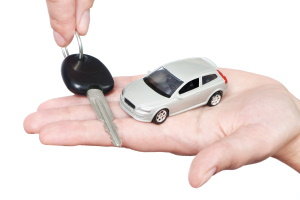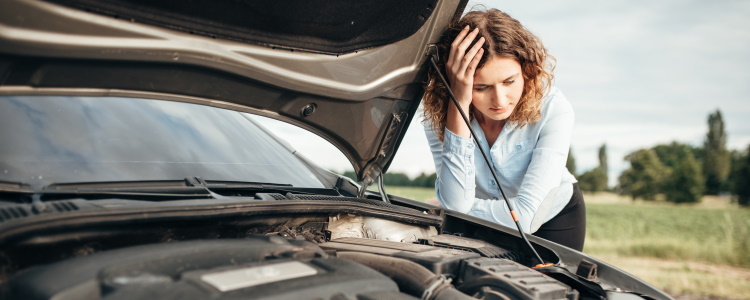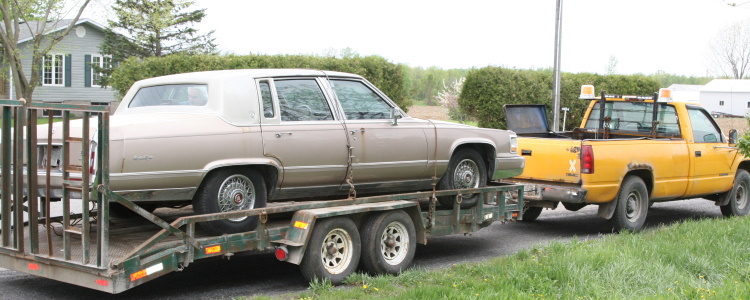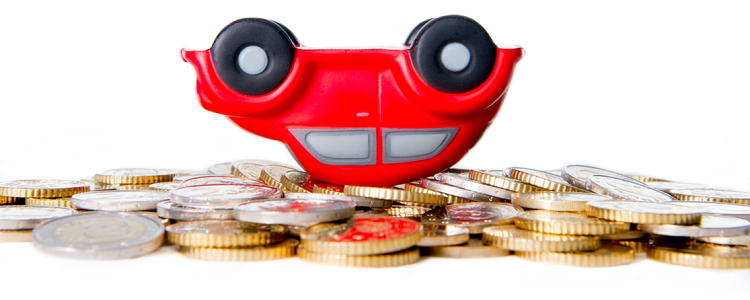Push, pull and drag events tend to pop up from time to time, especially when dealership stock is running low. If you need to trade in a vehicle that's seen better days, now might be a good time since it's a seller's market. Most dealerships don't accept non-running trades all the time, so if you see advertising for a push, pull, drag event, act fast if you have a clunker you want cash for.

Push, Pull, or Drag Your Car In While Trade-In Values Are High
Trading In at a Push, Pull, Drag Event
Right now may prove to be a good time to take advantage of your trade-in, no matter its condition, since many dealerships are offering higher prices to get your used car on their lot. This could include push, pull, drag events where dealers are offering cash for cars in any condition. More offers like this could spring up in the near future since dealerships are short on inventory – a side effect of production halts during the pandemic. Since inventory is down, and demand is high, you're likely to see a continuing surge in trade-in values, too.
If you're looking for the value of your car and notice that it's not worth much, you may be wondering how a push, pull, or drag event could help. Is it really possible for a dealer to offer you a few thousand dollars for your vehicle when its estimated trade-in value is only around $300? The answer is a little complicated.
Minimum Trade-In Allowance
Dealership events that tell you to come on down and trade in your car in any condition typically rely on what's known as a minimum trade-in allowance. If a trade-in allowance states that you get $1,500 for your car no matter the condition, it may not be realistic.
But, if it's not realistic to expect to get more for your clunker than it's worth, how can a dealership claim to give you so much? In reality, you're likely paying for the added allowance the dealer offers you for your car. This is because push, pull, drag events typically come with restrictions, such as no-haggle pricing on your next vehicle. The additional cash you're offered for your car is typically tacked onto the price of your next vehicle.
Don't want the headache of trading in your non-working vehicle, but you want to take advantage of what it might be worth, our partners can help you collect cash for your clunker so you're not pressured to do the deal all at once. This way, you can pocket the money for your vehicle, and use it as a down payment on the car you choose elsewhere.
Understanding Vehicle Values
If you take advantage of a push, pull, drag event, a possible downside is that once you trade in your existing model, the cash you get for it may not go as far. This is especially true if you're turning in a vehicle that's not worth much in actual cash value (ACV). Vehicles typically have more than one value attached to them, which can make it harder to determine just how much you can get for your vehicle unless you know what to look for.
Let's go over some of the basics:
- Actual Cash Value: ACV is the estimated value of your car. It's based on the original vehicle value less depreciation and can vary greatly depending on the condition of your car, the make, model, and amount of miles on the vehicle.
- Trade-In Value: This is typically lower than the ACV of the car you're looking to exchange or sell to the dealership since they look to sell vehicles for a profit. This is what you're usually offered when a dealership agrees to purchase your car.
- Retail value: The value of a used car on a dealer's lot. If you're wondering whether or not you're getting a fair price for your trade-in, simply check out the retail price for the same make and model car in your area. This is what you'd likely pay if you were to buy your vehicle today.
- Private Party Value: Again, this differs from the trade-in value and retail value of a car. Generally, you may be able to get more for your vehicle if you sell it yourself. Keep in mind, though, that you need to take care of all the details, such as bill of sale and title transfer, yourself if you're buying or selling a car privately.
Finding Your Car's Estimated Worth
Before you can get an estimate of your vehicle's value, you need to know if there's equity in it. Equity is the difference between the ACV and your loan balance. If the ACV is larger than the amount you owe, you have equity. If the opposite is true and you owe more money on the loan than the car is worth, you're in a negative equity position.
If you own your vehicle, any value it's assigned is yours to keep once you sell it. However, if you still have a loan on your car, whether it's in working condition or not, you first need to determine if there's any equity in it. To do this, contact your lender and request a 10-day payoff amount – this is the amount you owe on your loan plus an estimated 10 days of interest charges. Once you have that, compare it to the estimated value of your car.
There are several ways you can find out the value of your vehicle, but one of the easiest is typically to look at online valuation sites such as Kelley Blue Book and NADAguides. The values you find on these sites are known as book value and can vary depending on which "book,” or company, you're using for your information. The standard go-to guide for consumers is generally Kelley Blue Book, while retailers tend to use NADAguides or Black Book value.
Ready to Get Out of Your Clunker?
If you missed the boat on trading in your vehicle while it was in better condition, you may not be out of luck on getting the cash allowance you need from it. However, if you also need to get into another car, but your credit score has been standing in the way, we want to help.
At Auto Credit Express, we've been connecting credit-challenged consumers to dealerships with the bad credit lending resources they need for more than two decades, and we want to assist you, too. You can get the process of finding a dealer started right now by filling out our fast, free, zero obligation auto loan request form. We'll do the heavy lifting of finding a special financing dealership in your area.

Senior Automotive Financing Editor
Meghan has been writing professionally for over 25 years. She is expertly versed in automotive special financing and pricing analysis, having published hundreds of articles on Auto Credit Express and its sister sites, CarsDirect, and The Car Connection. Read more
Suggested Posts For You
Receive Free Updates
Get the latest credit tips, resources and advice delivered straight to your inbox.













